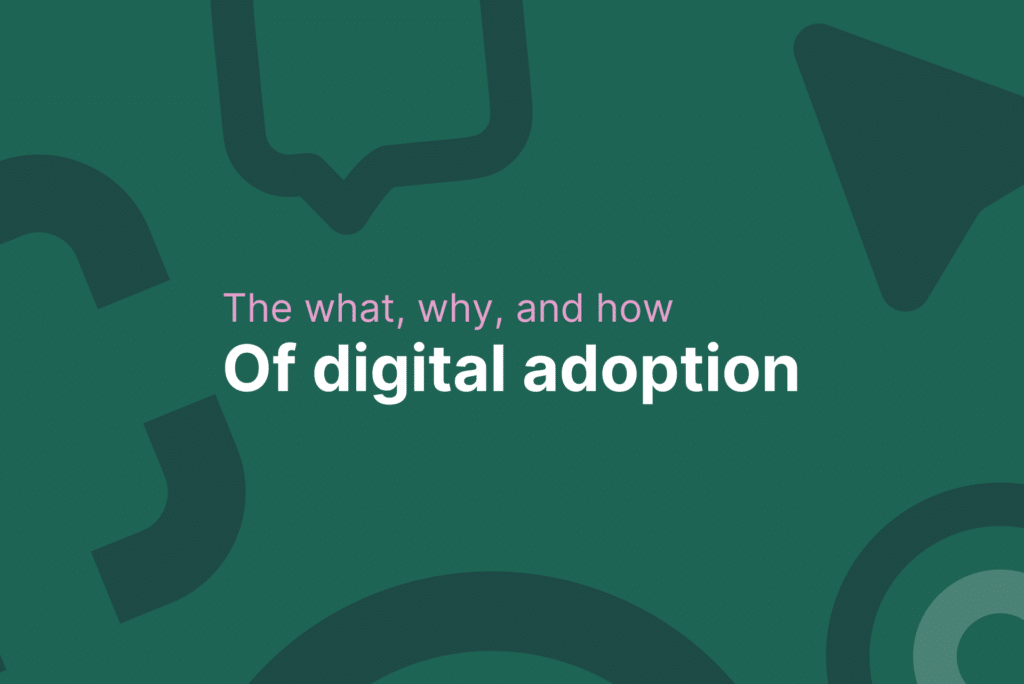What is digital adoption?
In the previous article, we looked at the key facts and figures on digital adoption. In this article, we’re diving a little deeper into what digital adoption is, why it’s important, and what you can do to ensure success.
When we talk about digital adoption we mean the successful onboarding of users onto an IT solution that helps organizations achieve a business goal.
As organizations invest in more business software to meet the growing demands of an unpredictable market, the need for training and documentation is exponentially increasing. If this important step is left out, they will not get the expected productivity lift that initially nudged them to invest and their ROI will not be met.
Why it's important
A recent study carried out by Deloitte found that digitally mature companies enjoy a wide range of benefits from their digital transformations. In addition to increased revenue and profits, these businesses also gain from increased productivity, customer engagement, motivated employees, and reduced expenses.
However, deciding to invest in digital technologies does not guarantee success. Without a digital adoption strategy, businesses often struggle to achieve the benefits that they were hoping for. In fact, Forbes estimates that 84% of digital transformation projects fail because of this.
Why it’s difficult
The reason that so many businesses fail to achieve their goals with their digital transformation projects is often simple. First, change is difficult and employees are resistant to change. Often this is linked to fear of not performing. Businesses that fail to manage change and motivate teams very rarely succeed.
Second, a key issue for many digital implementation projects is that training is often an afterthought. When it’s time to ensure that employees are successfully onboarded in the new solutions, the money allocated to the project has run out. Without the necessary training, resources, and a strategy for ensuring continuous progress, success is hindered.
How to achieve it
Behind every successful digital transformation is a clear strategic investment. The recipe for success can be summarized by a commitment and defined agenda to digitally transform the organization.
The following are some tips to help with your digital adoption strategy.
Change management
Ensure that your employees are susceptible to change by addressing that change is stressful and that they will initially lose productivity. If the application can coexist with existing systems, this allows for less loss of productivity for experienced users. By offering them the chance to train before going live, you eliminate some of the stress. Enabling the possibility of training within the application lets users try things out without worrying about mistakes.
Feedback
Maximize engagement by offering a variety of formats. People learn differently and different contexts require different formats. Some contexts call for videos while some require information in a presentation or downloadable format. You can further maximize engagement by providing contextual and personalized content.
Relevance
Training should always be relevant and current if you want employees to be motivated to learn. Make sure that users always have access to up-to-date content that reflects exactly what they see on screen. Equally important is ensuring that your users have access to the latest version of the software. Personalized content can support the different situations and roles of your employees. Particularly when users carry out less frequent tasks, having access to in-app guidance provides true value.

